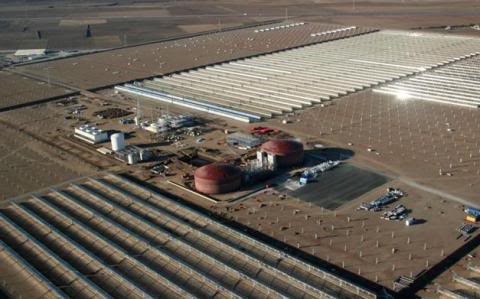The previously discussed finance mechanisms tend to hide the costs of building renewable generators by concealing the actual cost per unit of electricity and costs for the ratepayers or taxpayers as a whole. In an era when so much is hanging on energy policy, it makes more sense to consider policies that do not pull punches when it comes to costs and benefits.
Renewable Energy Payments
A more transparent approach to spurring the market for renewable energy technologies are Renewable Energy Payments, a.k.a. feed-in tariffs. REPs name and guarantee a feasible price for renewable power from supported technologies under a variety of conditions related to the size and siting of the generator. A successful REP system supports a variety of technologies and prices electricity to allow plant developers to recover their investment plus a reasonable profit. Another way to put it is that an REP system constitutes an open-ended power purchase agreement for 10 or 20 years that allows plant builders to receive financing at favorable rates because of the investment’s security, due to the guaranteed wholesale power price.

In successive generations of plants, some REP systems are designed to reduce the level of the tariff to encourage the industry to become more efficient. Some REP systems have a built in inflation factor to adjust the level of the initial tariff to reflect changes in the value of money. REPs are typically paid for via a supplemental charge attached to all power sales in the electricity system, pooled among the widest set of power users.
REP systems have been successfully applied in Germany and Spain and have recently been introduced in Ontario, France, and Italy. Since the inauguration of their current REP system in 2000, the Germans, for instance, have more than doubled the fraction of electricity attributable to renewable energy from 7 percent to over 14 percent. Estimates are that German power users will pay on average a maximum of 2.80 euros ($4.11) per account per month in 2015 when the effect of their REP law will be at its projected maximum, so the REP tariffs do not contribute much to overall power costs to consumers. If it were considered more politically acceptable to pay for the surplus power payments attributable to the REP tariffs in part through tax revenues rather than through electric rates, such a system could be designed.
An REP system starts out at “cost plus reasonable profit,” but to counteract inefficiency in the renewable energy industry needs to “degress” the tariff levels for successive generations of plants or introduce market elements into pricing. The German tariff steps down in successive new generations of plants and recently the solar rooftop tariff was reduced a higher-than-usual 9 percent for 2009 installations while there was higher allowance made for offshore wind to encourage that industry; both moves generated their share of controversy, which is almost inevitable in such an environment. In Spain, in addition to a premium for clean energy there is a market option which encourages renewable generators to heed the needs of the electricity market through demand-based incentives.
Direct government investment
Though less likely to be applied in the U.S. in the current political climate — where the levying and spending of tax monies is considered to be an imposition rather than payment for public services — the federal government itself can, as was the case with the Hoover and Bonneville dams, commission renewable generators in situations where risk or payback is too uncertain for private companies.
An effective REP law, however, might make government’s involvement in direct power generation limited to the development of research reactors or in commissioning renewable generators for use by government facilities. A commitment to run government installations largely or entirely on renewable energy could provide a test bed for an all-renewable grid for the broader society.
Though potentially rife with inefficiencies, issuing bonds may be one method for governments to finance new infrastructure. While government bonds are the equivalent of a credit card for the government, the total financed portion of the new infrastructure is stated in the bond. Bond issue may be a necessary evil in building key pieces of infrastructure that are not amenable to a performance-based standard like an REP.
Rebates
Small renewable generators, largely rooftop solar PV arrays, can also receive a rebate directly from a power company or state agency based on a formula that reduces the upfront cost to buyers of purchasing and installing this equipment. These incentives require the ready availability of funds either from government coffers or from the utility company itself and would present cash flow problems for these entities if applied to larger generators, as large rebate payments would need to be paid in very large chunks to co-finance the new power plants.
Building a national grid
As is currently the case with the building of long-distance transmission, the federal government will need to take a leading role in building new transmission lines to connect load centers with areas which are most favorable for renewable energy development. The main renewable energy areas that require new transmission are: the Great Plains, the intermontane regions of the Rocky Mountains, offshore on the Great Lakes and Pacific and Atlantic Coasts for wind development; desert and semi-arid areas of the West and Southwest for solar thermal and large-scale concentrating solar PV; geothermal wells and centers of electric demand.
Large states with substantial renewable resources, California and Texas have started planning for zones where transmission lines can be built as renewable generators are built in that zone. As transmission can take many years to build, these lines will bring renewable energy to market as soon as work on generators are commissioned and ready to generate electricity.
Next: Conclusion! Paying the piper.

